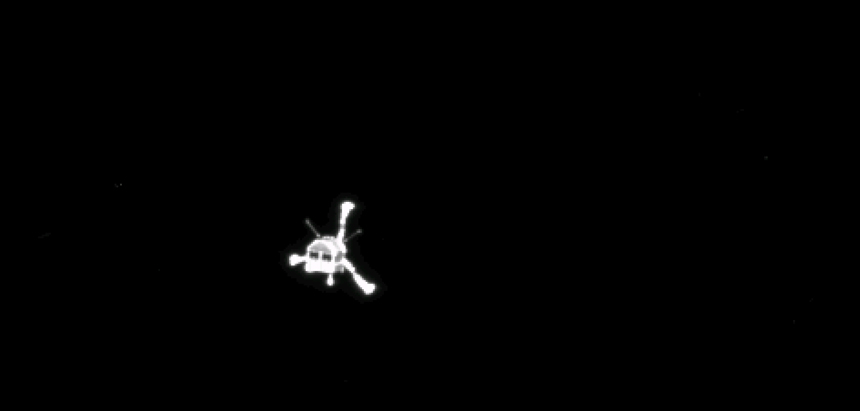Picture This: Falling to a comet
The Philae lander becomes the first lander to reach a comet

This image may appear fuzzy. But keep in mind it was taken by a robot — of a robot that had just been released into free-fall — hundreds of millions of miles (kilometers) away. With its legs now outstretched, the Philae lander, seen here, is about to settle onto the surface of a comet.
ESA/Rosetta/MPS for OSIRIS Team MPS/UPD/LAM/IAA/SSO/INTA/UPM/DASP/IDA







